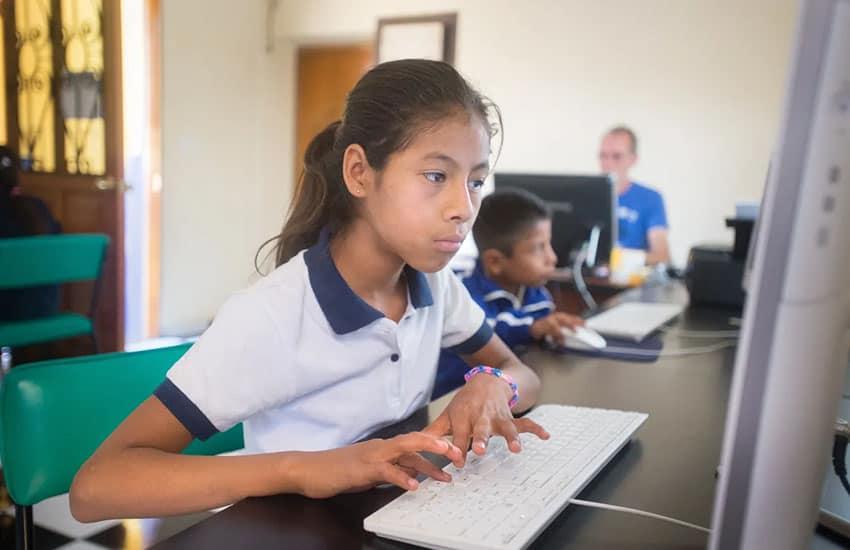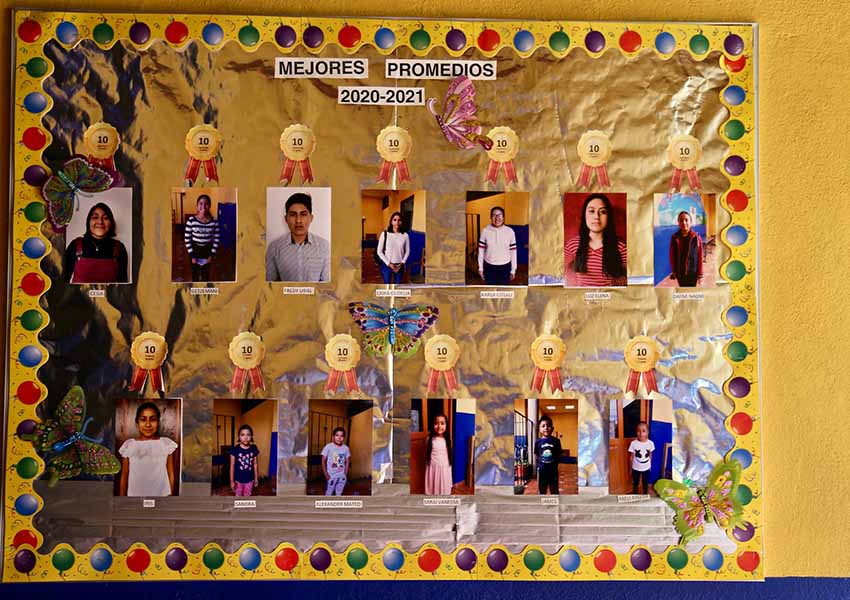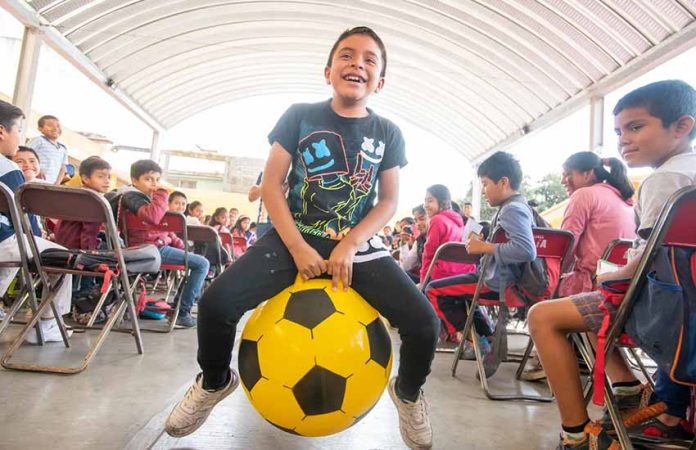Anyone who has visited the state of Oaxaca can attest that it is a magical place. Mexican and not Mexican at the same time, it distinguishes itself from the rest of the country by preserving many of its socio-political structures from the past. However, there is a downside.
Much of that preservation exists because of historical, geographical and socioeconomic isolation.
Like the rest of Mexico, Oaxaca is mandated to provide free, public and secular education to all the state’s children. But as one of the country’s poorest states, making that a reality requires more than just laws and regulations.
“Free” education comes with costs to families, including school uniforms, books and other supplies. Plus there is the hidden cost of lost income from children who could be earning a few pesos the family often needs to make ends meet. Almost 70% of the state’s population lives under the poverty line, and about 30% in extreme poverty. Before the COVID-19 pandemic, the dropout rate by seventh grade was already at 15%, one of the highest in the country.

Oaxacan children, on average, complete only 6.4 years of schooling, compared to the national average of eight years and 10.5 years for Mexico City. The situation is worse in the rural and indigenous communities, but it is also a serious problem in the city of Oaxaca, in part because it receives migrants from other parts of the state.
In the 1980s, Missouri expats Jodi and Harold Bauman noticed the visible effects of this lack of schooling and other opportunities through the large number of school-aged children working and hanging out on the streets day and night. These included kids from the city’s migrant Triqui community, whose original homeland is west of the city of Oaxaca.
The Baumans first worked with a Triqui family, helping them get their children enrolled in school and supporting their education. By 1996, when they officially founded Oaxaca Streetchildren Grassroots (OSG), the Baumans were supporting about 70 children.
OSG calls itself a “need-based, comprehensive program for children and young adults that gets them off the street and provides the opportunity to attend school…” They do this by subsidizing costs to families, along with providing nutritious meals, tutoring, a computer lab, a library and even some medical and dental services.

The organization is registered both in Mexico and the United States, but until now, its main installation has been the Centro de Esperanza Infantil (Center for Child Hope) in Oaxaca city. Over the past 26 years, the charity has matured enough to have paid staff, but most of the work is done by volunteers — many of them expats and students on exchange programs.
Kendall Chase Hitch volunteered with the organization as an exchange student. He worked with a teen girl to get her through high school, then worked on the board.
“It’s a really nice place.” she says, “They do a lot of work with, and they help a lot of, different families, a lot of different kids. It has a rich history. A lot of foreigners have kind of come to know a different side of Oaxaca from that experience of working with the kids there and getting to know their families and making a difference in their lives.”
She adds that it is a good way to get to know “…the real Oaxaca.”

The organization has also gone from supporting mostly Triqui children who had never been to school to supporting multiple programs centered in an old colonial building at Calle Crespo 308 that the charity bought in 2000. Early programs looked to get children to complete at least the sixth grade, but today, qualifying students can receive support for higher levels of education, even postgraduate studies.
At the moment, they have 651 students enrolled for support from elementary to high school. As of August 2022, 139 have graduated from college with degrees that will support their communities in fields such as accounting, English teaching, law, medicine/dentistry, nursing, primary education and more.
The various programs have filled the original center to capacity, but in 2021, the organization received a grant to open a second site in the nearby town of Xoxocotlán. Opening September 10th, the new center will offer even more services than the first and will serve up to 200 children.
But the success and growth of the program do not mean that it has not faced its share of challenges.

During the pandemic, the main center had to close temporarily, but the families they serve still needed support. They adapted by delivering food packages and setting up sites to give their children access to the Internet — a necessity for the distance education that the Mexican school system provided during the height of the pandemic.
The challenge right now, board member Marla Jensen says, is rising inflation.
I went looking for any negatives I could find about this organization. The only one I could find was a capstone thesis project by Jonathan Power at the School of International Training that warns that program participants can develop a “…false consciousness about assimilation into middle-class Mexican society.” This may be the case, but much of that has to do with the state of Mexican society, rather than whether or not indigenous and/or very poor children should or should not get as much education as possible.
On the plus side, there is nothing but praise for the Oaxacan Streetchildren from organizations such as Guidestar, Charity Navigator and Great Nonprofits. They have also received support from foreign organizations such as Grassrooots Volunteering (its parent organization), Grace Lutheran Church, the Rotary Club and Social Work Sin Fronteras, which does cross-cultural immersion in Oaxaca and is organized by the University of California at Berkeley’s School of Social Welfare.
Leigh Thelmadatter arrived in Mexico 18 years ago and fell in love with the land and the culture in particular its handcrafts and art. She is the author of Mexican Cartonería: Paper, Paste and Fiesta (Schiffer 2019). Her culture column appears regularly on Mexico News Daily.
